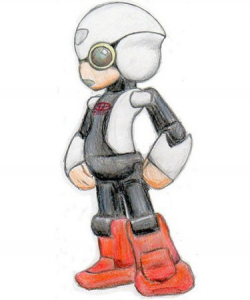
Robohub.org
KIBO robot project
A Japanese humanoid communication robot being developed by the KIBO Robot project, a joint research project by Dentsu Inc., the Research Center for Advanced Science and Technology, the University of Tokyo (RCAST) and ROBO GARAGE Co., Ltd., is expected to be completed in February 2013. In the summer of the same year, it will be sent to the Japanese Experiment Module “Kibo” in the International Space Station (ISS).
The project aims to create a humanoid communication robot that will be a companion for the Japanese astronauts, who will be living and working in the Kibo Experiment Module. The 34 cm (13 inches) large robot will be used to communicate with the astronauts via autonomous actions and remote operations. The robot will also transmit information from the Kibo module to Earth.
In winter 2013, the robot will come face-to-face with Koichi Wakata, the first Japanese commander of the ISS, and will take part in the world’s first conversation experiment held between a person and a robot in outer space. A second robot with the same specifications will be built to serve as a backup and for demonstration purposes on Earth. Koichi Wakata, born 1 August 1963, is a Japanese engineer and a JAXA astronaut. He has completed four NASA Space Shuttle missions and a long-duration stay on the International Space Station. Wakata is currently assigned to the Soyuz TMA-11M/Expedition 38/Expedition 39 long duration spaceflight scheduled for 2013-2014. He will be the first Japanese commander of the Space Station during Expedition 39.
tags: humanoid, Japan
Wolfgang Heller
Related posts :
Robot Talk Episode 126 – Why are we building humanoid robots?
Robot Talk
20 Jun 2025
In this special live recording at Imperial College London, Claire chatted to Ben Russell, Maryam Banitalebi Dehkordi, and Petar Kormushev about humanoid robotics.
Gearing up for RoboCupJunior: Interview with Ana Patrícia Magalhães
AIhub and Lucy Smith
18 Jun 2025
We hear from the organiser of RoboCupJunior 2025 and find out how the preparations are going for the event.
Robot Talk Episode 125 – Chatting with robots, with Gabriel Skantze
Robot Talk
13 Jun 2025
In the latest episode of the Robot Talk podcast, Claire chatted to Gabriel Skantze from KTH Royal Institute of Technology about having natural face-to-face conversations with robots.
Preparing for kick-off at RoboCup2025: an interview with General Chair Marco Simões
AIhub and Lucy Smith
12 Jun 2025
We caught up with Marco to find out what exciting events are in store at this year's RoboCup.
Interview with Amar Halilovic: Explainable AI for robotics
AIhub
10 Jun 2025
Find out about Amar's research investigating the generation of explanations for robot actions.
Robot Talk Episode 124 – Robots in the performing arts, with Amy LaViers
Robot Talk
06 Jun 2025
In the latest episode of the Robot Talk podcast, Claire chatted to Amy LaViers from the Robotics, Automation, and Dance Lab about the creative relationship between humans and machines.
Robot Talk Episode 123 – Standardising robot programming, with Nick Thompson
Robot Talk
30 May 2025
In the latest episode of the Robot Talk podcast, Claire chatted to Nick Thompson from BOW about software that makes robots easier to program.
Congratulations to the #AAMAS2025 best paper, best demo, and distinguished dissertation award winners
AIhub
29 May 2025
Find out who won the awards presented at the International Conference on Autonomous Agents and Multiagent Systems last week.



